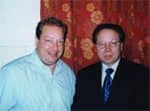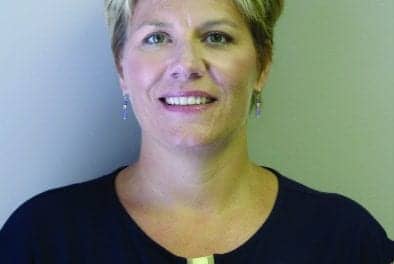Better Hearing Institute (BHI) Executive Director Sergei Kochkin updated members of the hearing industry on the past year’s activities and looked at initiatives planned for 2006 during the recent Hearing Industries Association (HIA) meeting. Under the guidance of Kochkin and BHI Chairman Mikael Worning, the BHI has embarked on an ambitious program to remake itself into one-stop resource for consumers seeking hearing help.

The BHI has just completed the second year of a 3-year plan initiated in the beginning of 2004. The plan entailed three phases: 2004 was dedicated to redesigning the BHI identity, which included a new logo, Web site, and written material, as well as a continued effort on the Physician Referral Development Program and preparation for MarkeTrak, which would feed future public relations initiatives. A study by the Institute also found that its Physician Referral Development Program accounted for approximately $29 million annually at the hearing health care provider level.
Last year was the first year that BHI began rebuilding its consumer education outreach program. In 2005, the Institute added to its selection of e-literature the Guide to Your Child’s Hearing, edited by pediatric audiologist Judith Gravel, PhD, of Children’s Hospital of Philadelphia.
Additionally, through a special grant from Knowles Electronics, BHI produced MarkeTrak VII (see July 2005 HR), which presented a 21-year look at trends in the hearing health care market, and found that over 31 million people have significant hearing loss. Much of this market information, along with the study “Hearing Loss and Its Impact on Household Income” (October 2005 HR), was used extensively to generate media coverage of hearing care issues. Combined with quality of life research conducted in 2004 by Dr. Brigit Shields and previous work by the National Council on the Aging (Kochkin & Rogin, January 2000 HR), valuable information has been leveraged in support of the tax credit bills.
Additionally, MarkeTrak VII results produced three major publications:
• MarkeTrak VII 21 year trend paper (July 2005 HR). For the BHI’s marketing efforts, this material also provided demographic information in public relations efforts, with the key message being “the majority of people with hearing loss are below retirement age.”
• The impact of hearing loss on income loss (October 2005 HR). This 44,000 household study, which was designed to complement Dr. Brigit Shields’ literature review, brings attention to the impact of hearing loss on the majority of hearing-impaired consumers who are still in the work force and in the prime of their lives. The key finding was that there is a near-perfect linear relationship between hearing loss and loss of income (about $1,000 per decile of hearing loss). The more important finding is that use of hearing aids significantly mitigates loss of income (again, shown by a strikingly linear relationship).
• Customer satisfaction with digital hearing aids (September 2005 HJ). The key result was a demonstration of improvements in customer satisfaction correlated with increased penetration of digital hearing aids in the marketplace.
Public Relations. In 2005, BHI public relations releases were primarily centered on the latest MarkeTrak VII findings and Dr. Gravel’s eGuide. The Institute has also written a NAPS (North American Precis Syndicated) release targeted at 10,000 newspapers on the impact of hearing loss on income, titled “Hearing Less May Mean Earning Less” (available at: www.betterhearing.org/press/pdfs/NAPSincomerelease.pdf). This generated almost 300 newspaper articles in 8 different states with a readership of 10.8 million.
BHI eGuides. The core of the BHI educational literature is contained in its publication, Your Guide to Better Hearing. BHI has written extensively on most key subjects related to hearing loss and plans to release about 10 eGuides in the future. The BHI’s first eGuide, A Guide to Your Child’s Hearing, received approximately 100 media mentions.
PBS Mini-Documentary. A PBS special on hearing loss, funded by a special grant from Sonion, is now in production. The program has the title Spotlight on—Hearing Loss Treatment, and is scheduled to be completed during the first quarter of 2006. The 5-minute documentary positively positions hearing instruments and hearing health care providers while using the most recent MarkeTrak VII findings. The documentary also draws heavily on the recent quality-of-life findings discussed above. Dr. Vinton Cerf, co-founder of the Internet and currently an executive at Google, has agreed to be a celebrity guest for the documentary.
The projected viewing audience for specials of this type is 3-5 million, with an average of at least 500 airings over a 3-6 month timeframe. (For more information on the PBS documentary, see the October HR News, p 8.)
A by-product of the PBS mini-documentary will be a longer (15-20 minute) documentary about how hearing aids are made and the science behind them, and this will be used in a more general capacity. In this documentary, the entire hearing health care process at the office of a top dispensing professional will be filmed.
Celebrity Outreach. In 2005, BHI made an attempt to secure new celebrities, as well as “average American” success stories, by mass communication with the entire hearing healthcare industry. This effort included a “celebrity package” for use by dispensing professionals (see Sept 2005 HR, p 59). So far, Tamika Catchings, a world class female professional basketball player; Dr. Vinton Cerf, the co-founder of the Internet and a Google executive, and Tom Ridge, past Governor of Pennsylvania and former Homeland Security Secretary, have been secured.
BHI is hoping for more. The Institute continues to make an appeal for dispensing professionals to aid the Institute in finding celebrities who would be willing to come forth with positive stories about their hearing loss and treatment with hearing aids.
Physician Communication. Because the Physicians Referral program was not publicized in 2005, fewer than 100 dispensers joined it. Total total enrollment stands at about 2,400. In addition to the existing programs, BHI added an offer of Your Guide to Better Hearing for physician offices, as well as reprints of “MarkeTrak VII: Customer Satisfaction with Hearing Instruments in the Digital Age.”
Web site. Through November 2005, BHI received more than 200,000 visitors to its Web site, with each spending 11.5 minutes. Many new features are planned for the Web site in 2006.
BHI’s Plans for 2006
• Getting hearing loss screening as a higher priority among physicians—that is approaching the top medical associations to get hearing screening as part of a “best practice protocol.”
• Finding additional tools for members of BHI’s Physician Referral Development Program.
• Completion of MarkeTrak research and leveraging of findings.
• Recruiting a wider variety of younger celebrities and developing a database of notable “average Americans” for greater media exposure as well as development of a peer mentoring program (eg, hearing-impaired lawyers talking to other lawyers).
• Achieving public service announcement (PSA) placements in medical magazines.
• Completion and airing of the PBS documentary.
• Development and enhancement of the BHI website.
• Getting BHI presence in pharmacies and environments where people need to hear.
• Engaging the hearing care industry in a greater partnership with BHI as a means of more effective promotion of the benefits of hearing health care.
For more information, visit the BHI Web site at www.betterhearing.org.





